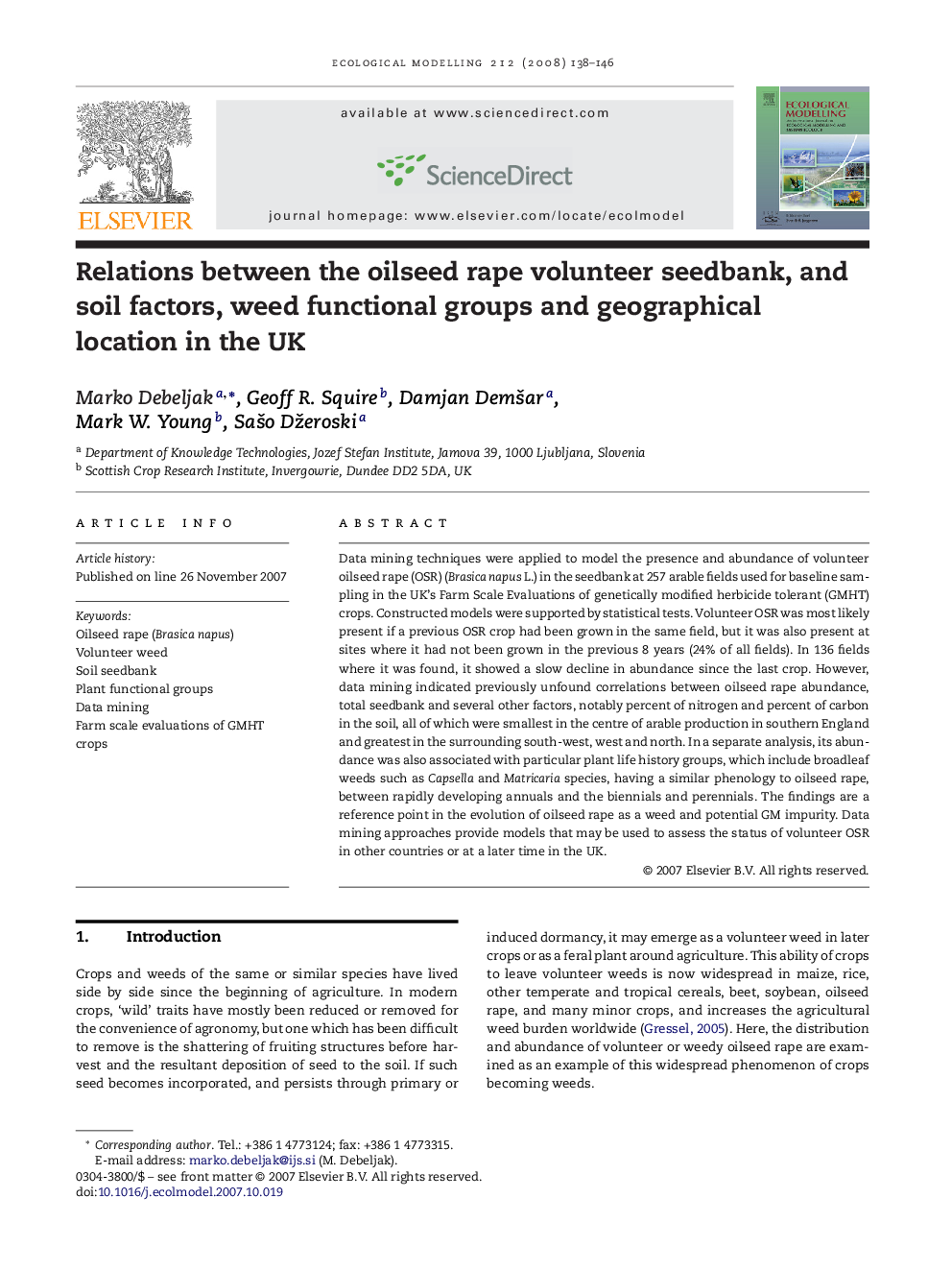| Article ID | Journal | Published Year | Pages | File Type |
|---|---|---|---|---|
| 4377984 | Ecological Modelling | 2008 | 9 Pages |
Data mining techniques were applied to model the presence and abundance of volunteer oilseed rape (OSR) (Brasica napus L.) in the seedbank at 257 arable fields used for baseline sampling in the UK's Farm Scale Evaluations of genetically modified herbicide tolerant (GMHT) crops. Constructed models were supported by statistical tests. Volunteer OSR was most likely present if a previous OSR crop had been grown in the same field, but it was also present at sites where it had not been grown in the previous 8 years (24% of all fields). In 136 fields where it was found, it showed a slow decline in abundance since the last crop. However, data mining indicated previously unfound correlations between oilseed rape abundance, total seedbank and several other factors, notably percent of nitrogen and percent of carbon in the soil, all of which were smallest in the centre of arable production in southern England and greatest in the surrounding south-west, west and north. In a separate analysis, its abundance was also associated with particular plant life history groups, which include broadleaf weeds such as Capsella and Matricaria species, having a similar phenology to oilseed rape, between rapidly developing annuals and the biennials and perennials. The findings are a reference point in the evolution of oilseed rape as a weed and potential GM impurity. Data mining approaches provide models that may be used to assess the status of volunteer OSR in other countries or at a later time in the UK.
